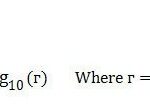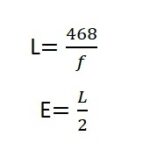What is the Difference Between SR and BSR in LTE?
Let me explain the difference between SR (Scheduling Request) and BSR (Buffer Status Report) in LTE. Both SR and BSR are important concepts in LTE networks, and understanding them will give you deeper insight into how data is transmitted in the system. While they may sound similar, they serve different purposes in the scheduling and resource allocation process. Let’s dive into the details of each one.
What is SR (Scheduling Request)?
In LTE, SR is a mechanism used by the user equipment (UE) to request resources from the evolved NodeB (eNB) when it needs to send data. The SR is sent to the eNB to indicate that the UE has data waiting to be transmitted and that it needs resources for uplink communication. This request is crucial in situations where the UE needs to send data but doesn’t have any assigned resources.
To make it simple, think of the SR as a “hand raise” in class. When the UE has something to send, it raises its hand (sends an SR) to the eNB, signaling that it’s ready to communicate. The eNB then processes the request and allocates the necessary resources to the UE for transmission.
SR is sent on a physical channel (PUSCH) in LTE and is often used in cases where the UE has a small amount of data to send, or if there are no available uplink resources assigned yet. The eNB will then decide whether to grant the SR and allocate the necessary resources for the data transfer.
What is BSR (Buffer Status Report)?
BSR, on the other hand, is a report sent by the UE to inform the eNB about the status of the data buffers. The BSR indicates how much data is currently waiting in the UE’s buffer, giving the eNB information about the amount of data that still needs to be sent. This helps the eNB decide how to allocate resources for the transmission, ensuring that the data is delivered efficiently.
In simple terms, the BSR is like a “status update” on how much work (data) the UE has left to send. The UE sends this report periodically or when there is a significant change in the buffer size, allowing the eNB to allocate appropriate resources based on the needs of the UE.
Key Differences Between SR and BSR
- Purpose: The SR is used to request uplink resources for data transmission when the UE doesn’t have any allocated resources, while the BSR is used to inform the eNB about the status of the UE’s data buffer, helping it manage resource allocation more efficiently.
- Triggering Mechanism: SR is sent when the UE needs to transmit data but has no uplink resources assigned, whereas BSR is sent periodically or when there’s a significant change in the data buffer status.
- Type of Data: SR usually indicates that the UE has data ready to send, while BSR tells the eNB how much data is waiting to be sent.
- Channel Used: SR is sent on the PUSCH, whereas BSR is sent on the MAC (Medium Access Control) layer, often as part of the RRC signaling process.
- Resource Allocation: SR helps initiate the resource allocation process, while BSR helps fine-tune the allocation by giving the eNB more information about the UE’s needs.
As we’ve learned earlier in other articles, efficient resource management is critical for maintaining high performance in LTE networks. SR and BSR are tools that help achieve this by ensuring that the eNB has the necessary information to allocate resources when the UE needs them most. These mechanisms play an essential role in optimizing data transmission, especially in scenarios where the network is handling multiple UEs with varying traffic demands.


